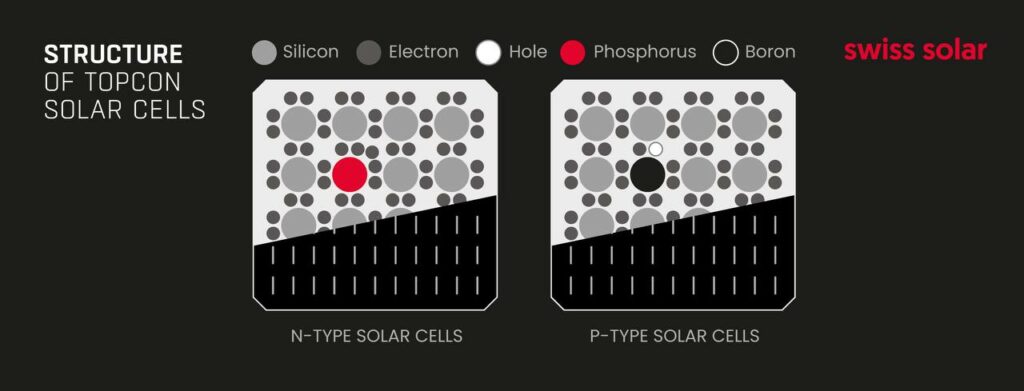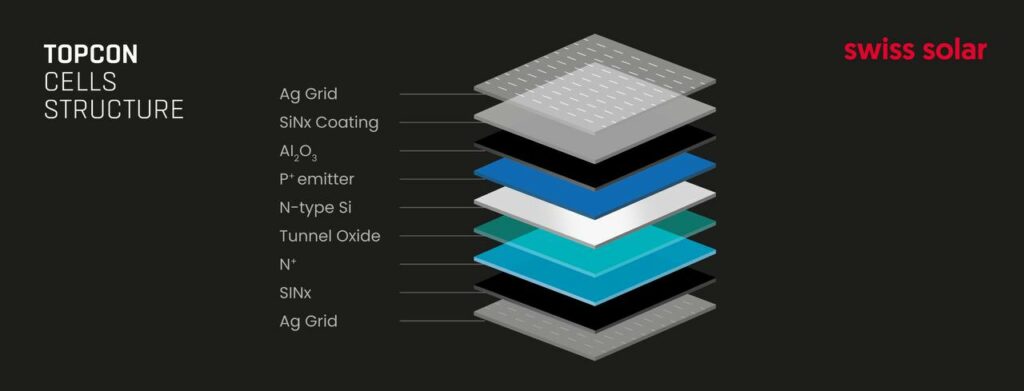TOPCon Solar Cells: The New revolutionizing PV Module Technology
08/02/2023
Swiss Solar never stands still and always uses revolutionary and innovative technologies in its products.
We would like to bring to your attention for Tunnel oxide passivated contact (TOPCon) solar cell technology is a revolutionizing product that upgrades the design of the PERC/PERT solar panels.
Structure of TOPCon solar cells
TOPCon solar cells can be manufactured as n-type or p-type solar cells, but the n-type variation has proven to be more efficient and resistant to impurities. Because TOPCon solar cells are an upgrade from PERC/PERT solar cells, it is important to understand the structure of this new technology.

The TOPCon solar cell structure takes the base structure of the PERT solar cell but includes an ultra-thin silicon dioxide (SiO2) layer working as the tunnel oxide layer and replaces the back surface field layer with phosphorous-doped polycrystalline silicon (n+ Poly-Si) layer. These modifications have improved the efficiency by reducing the recombination process thanks to the passivation in the added layers.


Advantages and disadvantages of TOPCon solar cells
Advantages
Higher efficiency reported
One of the main features of TOPCon solar panels is the higher efficiency achieved. According to the Fraunhofer ISE institute, efficiencies can go beyond 25%
Better performance as a result of a lower temperature coefficient
Traditional PV modules feature a temperature coefficient of 0.4%/℃-0.5%/℃, while PERC PV modules perform better by taking that coefficient slightly under the 0.4%/℃ frame.
15% higher bifacial factor
The bifacial factor for PERC PV modules has been determined on average to be at around 70%. TOPCon solar panels, on the other hand, have proven to take the bifacial factor up to 85%. This increased bifacial factor can increase power gains by as much as 2%.
Disadvantages
Higher silver requirement equals higher price
One of the major issues of TOPCon solar cells is a higher requirement of silver to print the contacts on the cell. The ideal option to reduce costs would be to increase efficiency while maintaining current costs. Lowering the costs for this technology is imperative to hit the market at reasonable prices.
Swiss Solar AG